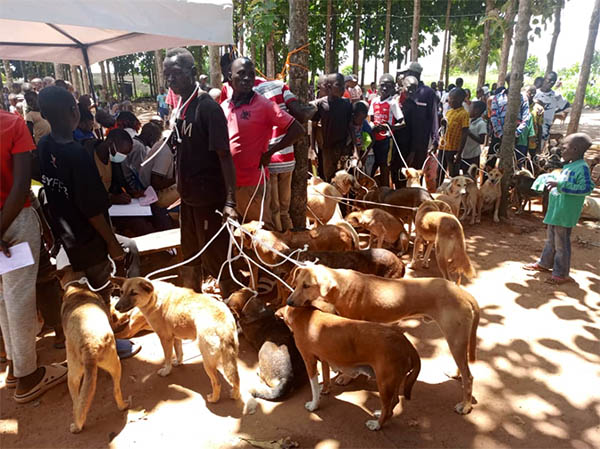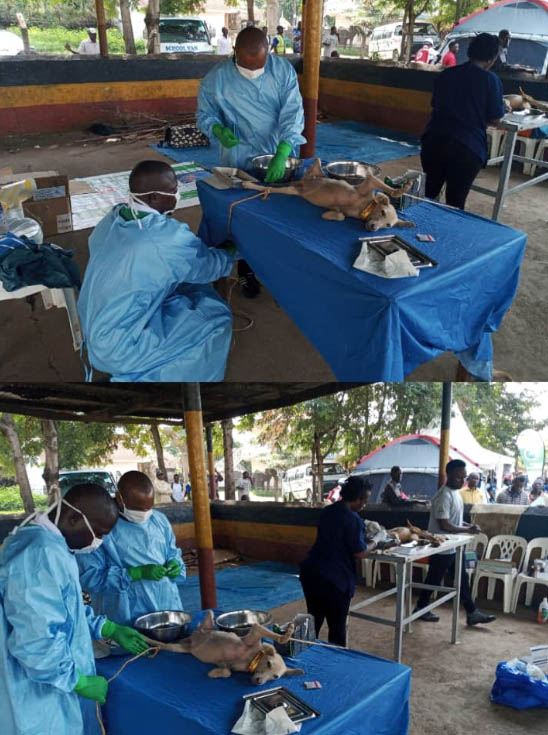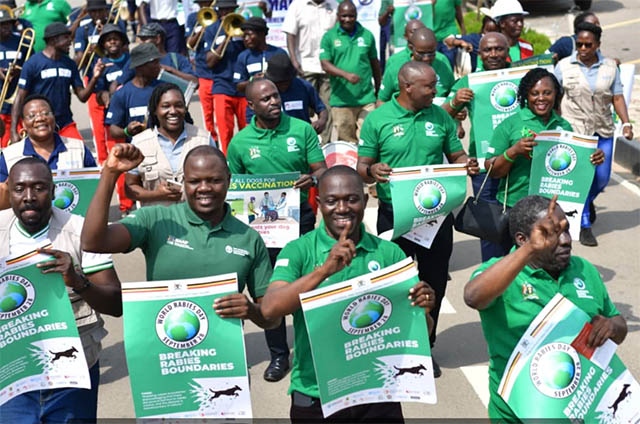
Kasese, Uganda | THE INDEPENDENT | ICT State Minister Godfrey Kabbyanga Baluku has promised new government commitment to work with partners to prevent and eliminate the rabies disease in Uganda by 2030.
“Government is committed to work with all stakeholders to fight rabies. Rabies is a deadly disease and it is too expensive for individuals to pay for treatment when bitten by rabid animals,” the minister said as Uganda marked World Rabies Day in Kasese on Saturday.
The Minister expressed appreciation about the coordination and collaboration of over 15 partners, who came together to fight rabies as Uganda marked World Rabies Day 2024 with a week of activities. He later awarded certificates to District Health Officers, District Veterinary Officers, public health staff, surveillance focal persons, Uganda Wildlife Authority staff, District Health Educators plus statisticians from western region who attended a One Health training this week in Kasese

The theme for this year’s Rabies Day was “Breaking rabies boundaries: Acknowledging that there are several barriers to rabies control, and the disease is transboundary in nature”.
Earlier, the Uganda Veterinary Board (UVB) emphasized the critical importance of rabies prevention.
“We advocate for rabies vaccinations for dogs and cats, encourage responsible pet ownership, and engage communities in raising awareness about rabies prevention. The Uganda Veterinary Board and veterinary professionals are dedicated to safeguarding community health by preventing rabies outbreaks. Through collaboration, veterinarians, animal health professionals, and communities can work towards a future free from the threat of rabies,” said Dr. Florence Masembe N. Kasirye, the UVB secretary.
She reminded veterinary professionals to renew their licenses for 2025 to practice legally and maintain high professional standards.
“Renewing licenses demonstrates a commitment to upholding ethics in the veterinary field. Through collective efforts on World Rabies Day and beyond, we strive for a future where rabies is eradicated, ensuring the safety of both animals and humans.”
****


About rabies: Rabies is a fatal viral disease of all warm-blooded animals, including humans. It spreads through bites and scratches from infected animals, and 99% of human cases are from dogs.
Signs in dogs: The signs of rabies in animals include aggressive behavior, chewing on strange things such as rocks, dirt, or wood, excessive drooling of saliva, fear of light, and difficulty in breathing and swallowing.
Signs in human beings: In humans, the signs and symptoms include headache, fear of water, wind, and exposure to sunlight, difficulty in breathing and swallowing, hearing strange voices, and seeing strange things that do not exist.
OTHER Facts about rabies






How to prevent rabies?
Awareness creation: Every Ugandan must know how to prevent rabies in animals when to suspect that an animal might be having rabies, and what should be done in case he/she is bitten by an animal so that he/she does not develop the disease.
Getting treatment: After an animal bite, also called post-exposure prophylaxis (PEP). This is admitted after one is bitten or scratched by an animal suspected to be having rabies. If the wound is managed properly by washing with plenty of water and soap immediately after the animal bite and PEP is promptly accessed, one is almost 100% sure that they will not die from rabies.
Vaccination of animals: Mass vaccination of Dogs, cats, and other pets is another proven way of preventing rabies.
Barriers needed to be dealt with include;









 The Independent Uganda: You get the Truth we Pay the Price
The Independent Uganda: You get the Truth we Pay the Price



